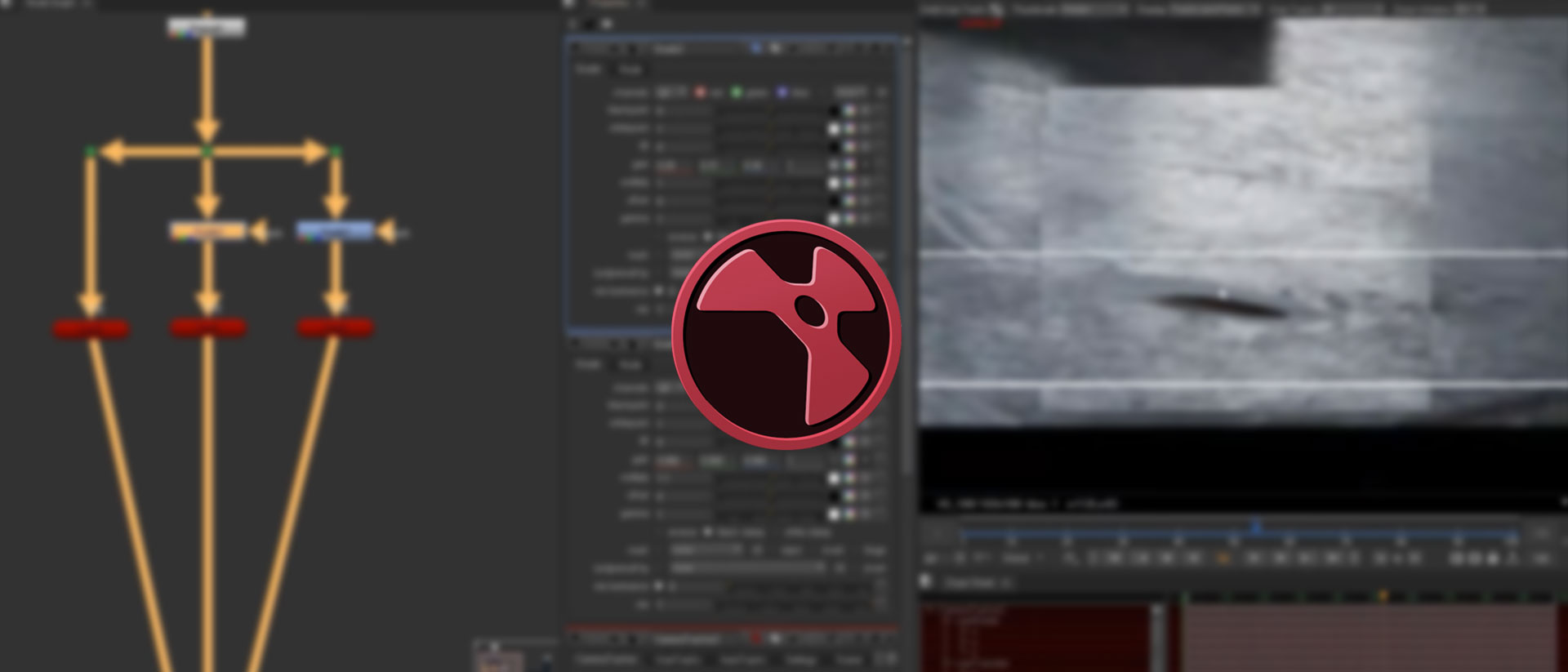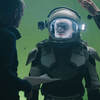8 Nuke Tutorials To Boost Your Compositing Skillset
February 2, 2021
Logan Leavitt
Nuke has never been more accessible! Check out these eight tutorials to jumpstart your growth or hone your current skills.
Every year, we see the world of VFX become more and more accessible. Through both technological advancements and a growing community, there are more convenient ways to hone your craft than ever before!
In the past, absurdly expensive proprietary machines locked behind studio walls kept the indie and small budget filmmaker from utilizing industry-standard tools.
In the past, absurdly expensive proprietary machines locked behind studio walls kept the indie and small budget filmmaker from utilizing industry-standard tools.
Today, we’ve turned the corner on a new decade, and the bleeding edge of VFX is truly at all our fingertips. For top-of-the-line node-based compositing, Nuke is nine times out of ten your go-to. Best of all, it has a free non-commercial version and an affordable indie option if you’re new to the program.
Beginner or not, here are four tutorials to add or sharpen skills in your compositing toolkit.
Beginner or not, here are four tutorials to add or sharpen skills in your compositing toolkit.
1. AE2NUKE Class 1 - After Effects To Nuke 101
After Effects is the natural first step for most compositors and many visual effects artists. It’s a program with great accessibility, great support, and truly professional capabilities.
Here, in one of his many great Nuke tutorials, Hugo Guerra helps you step smoothly from the After Effects world into Nuke.
The transition can be rough especially when it comes to layer vs. node-based systems, but Hugo’s mastery of both offers several connection lines that will guide you along the way.
Whether you’re curious and want to try Nuke for the first time or are a Nuke amateur but an AE expert, this tutorial will help you translate a little more knowledge from one software to the other.
Here, in one of his many great Nuke tutorials, Hugo Guerra helps you step smoothly from the After Effects world into Nuke.
The transition can be rough especially when it comes to layer vs. node-based systems, but Hugo’s mastery of both offers several connection lines that will guide you along the way.
Whether you’re curious and want to try Nuke for the first time or are a Nuke amateur but an AE expert, this tutorial will help you translate a little more knowledge from one software to the other.
2. Advanced Keying Breakdown
Keying is obviously a big part of Nuke’s toolset. In this tutorial, Tony Lyons dissects the scientific approaches that are available to you in Nuke.
He also discusses some of the fundamental components of keying in Nuke such as alpha management and despill. This tutorial is an all-in-one solution for beginners or as a refresher for someone with experience. It has 10 parts, so add it to your bookmarks and consider taking notes!
He also discusses some of the fundamental components of keying in Nuke such as alpha management and despill. This tutorial is an all-in-one solution for beginners or as a refresher for someone with experience. It has 10 parts, so add it to your bookmarks and consider taking notes!
3. How to Composite Muzzle Flashes, Gun Smoke, & More Gun FX Stock Footage
My favorite tutorials are ones that are deceptively simple on the surface, but offer a wealth of knowledge once you dive in.
The concept of muzzle flashes and basic stock footage compositing brings most of us back to the early days of learning After Effects and alpha channels, yet on closer inspection, this tutorial puts on display some of the differentiating factors when working within Nuke’s full-featured toolset.
The concept of muzzle flashes and basic stock footage compositing brings most of us back to the early days of learning After Effects and alpha channels, yet on closer inspection, this tutorial puts on display some of the differentiating factors when working within Nuke’s full-featured toolset.
In particular, the rebuilding of the scene inside of Nuke’s own 3D function shows the level of control node-based compositing is so famous for.
Not only are we able to move through all of the standard processes from transforms, merges, and grades, but the addition of environmental effects such as bullet hits, debris, and more are the icing on the cake.
For compositing stock footage, it’s the details that bring a level of realism and total integration into your scene. Nuke’s camera and 3D tools are fundamental components in making this a reality.
Not only are we able to move through all of the standard processes from transforms, merges, and grades, but the addition of environmental effects such as bullet hits, debris, and more are the icing on the cake.
For compositing stock footage, it’s the details that bring a level of realism and total integration into your scene. Nuke’s camera and 3D tools are fundamental components in making this a reality.
4. Introduction to Color Correction in Nuke
Though I may be biased due to our collaborations in the past, my personal crown for the king of educational Nuke content rests on the head of VFX Compositor Hugo Guerra. This article could be 10 tutorials long, be made of only Hugo’s Desk videos, and be just as beneficial to our readers.
This tutorial attacks one of the most key components of compositing, and frankly, all VFX: Color. As a compositor, you’re the ultimate equalizer.
Whatever was shot during production, whatever was created in 3D, whatever was sourced for assets, the final assembly happens in the world of compositing and whatever ends up in the frame is the final picture of everyone’s work.
Whatever was shot during production, whatever was created in 3D, whatever was sourced for assets, the final assembly happens in the world of compositing and whatever ends up in the frame is the final picture of everyone’s work.
Color is the foundation here and the “camouflage” that will blend all your components into one. In Nuke, color is mathematical and scientific. You will train yourself to lean on your RGB values and scopes to guide your path.
As Hugo says in the beginning of the tutorial, “In a way, it’s all a big math puzzle really”. Even for more advanced artists, this video could bring some fresh perspective, if not new information.
As Hugo says in the beginning of the tutorial, “In a way, it’s all a big math puzzle really”. Even for more advanced artists, this video could bring some fresh perspective, if not new information.
5. Nuke Camera Tracking
This crucial walkthrough of Nuke’s camera tracking by Tunnelvizion is simple and easy to follow. Nuke’s camera tracker may not be as fleshed out as other dedicated solutions, but it gets the job done for compositing use and in some cases CG round-tripping.
In the tutorial you’ll learn about the first steps, setting your ground plane, and controlling the level of error in your track. The camera tracker is a "need-to-know" for any Nuke compositor and one of the biggest time-savers in the program’s arsenal.
In the tutorial you’ll learn about the first steps, setting your ground plane, and controlling the level of error in your track. The camera tracker is a "need-to-know" for any Nuke compositor and one of the biggest time-savers in the program’s arsenal.
6. How to Composite 2D VFX Stock Footage Into a 3D Scene In Nuke
Once you have a solid 3D track, you will want to make the most of it. The most cost and time-effective way to do this is through stock footage placement in your new 3D scene.
In this tutorial, Sebastion Siggerud will brush up on some of the camera tracking basics from the previous tutorial and go over how to properly place 2D elements inside of your scene.
Not only is this an important technical skill, but it communicates a cornerstone of the VFX process: if you’ve recreated the camera, you have ultimate control.
In this tutorial, Sebastion Siggerud will brush up on some of the camera tracking basics from the previous tutorial and go over how to properly place 2D elements inside of your scene.
Not only is this an important technical skill, but it communicates a cornerstone of the VFX process: if you’ve recreated the camera, you have ultimate control.
7. How to Create Particle Environments in Foundry’s Nuke
On display in this tutorial from The Foundry is the depth of Nuke’s feature set. Though it’s not a dedicated 3D software, there are enough tools to scrap together even a full scene as shown using the same techniques you might bring to Maya or Houdini.
Through a particle system, the artist is able to “grow” some plants from the ground up using a couple of TIF files and Nuke’s built-in emitters. Though you might not often find yourself turning to Nuke for this kind of case, there’s a lot to be said for foliage, especially in tandem with stock footage on a live-action shot.
Foreground elements can be difficult to come by and integrate into a scene. These dustings of foliage, terrain, buildings, or whatever your setting calls for can obviously add a new layer of depth to an otherwise flat perspective. With Nuke, you can take this all into a 3-dimensional scene and find a new level of realism with extreme control over every piece of your composite.
8. How to Use Multi-Channel OpenEXR Passes
Control is the name of the game in compositing and there are few assets with a more granular level of it than multi-channel image sequences. Whether you’re using EXR, DPX, or even PNG sequences, there’s so much data to be packed in the channels behind your image. In Nuke, you get access to every single one.
The fundamental process here is simple: separate your channels, manipulate them, and then put them back together. Multichannel compositing is where the node graph as a user interface approach really shines as well.
From a functional perspective, the ability to see these channels pulled apart but neatly lined up with color corrections, grades, glows, and more assigned to each split of the pipe is something really special.
From a functional perspective, the ability to see these channels pulled apart but neatly lined up with color corrections, grades, glows, and more assigned to each split of the pipe is something really special.
When it clicks, it clicks well. Combine this with the 3D tools and color correction knowledge above, and you’ve got the tools for movie magic inside of Nuke.
If you’re looking for pre-keyed VFX that will elevate the realism of your Nuke projects, look no further! Whether you need atmospheric elements like smoke and fog, or the action-packed elements like fire, explosions, and more, you’re in the right place.
If you’re looking for pre-keyed VFX that will elevate the realism of your Nuke projects, look no further! Whether you need atmospheric elements like smoke and fog, or the action-packed elements like fire, explosions, and more, you’re in the right place.
As a subscriber with full access to the library on the ActionVFX Subscription, you'll not only be saving 80% off compared to purchasing assets without a subscription, but you can also get 1,000+ free bonus assets. Click here for more information and to subscribe today!
We also have great free VFX elements, as well! It’s the perfect way to give us a try.
Stay informed about our release schedule to see all the latest VFX elements coming soon, and sign up for our email newsletter to get a reminder when we release them!
Remember to connect with us on our social networks to stay updated on our latest news, giveaways, announcements, and more!



